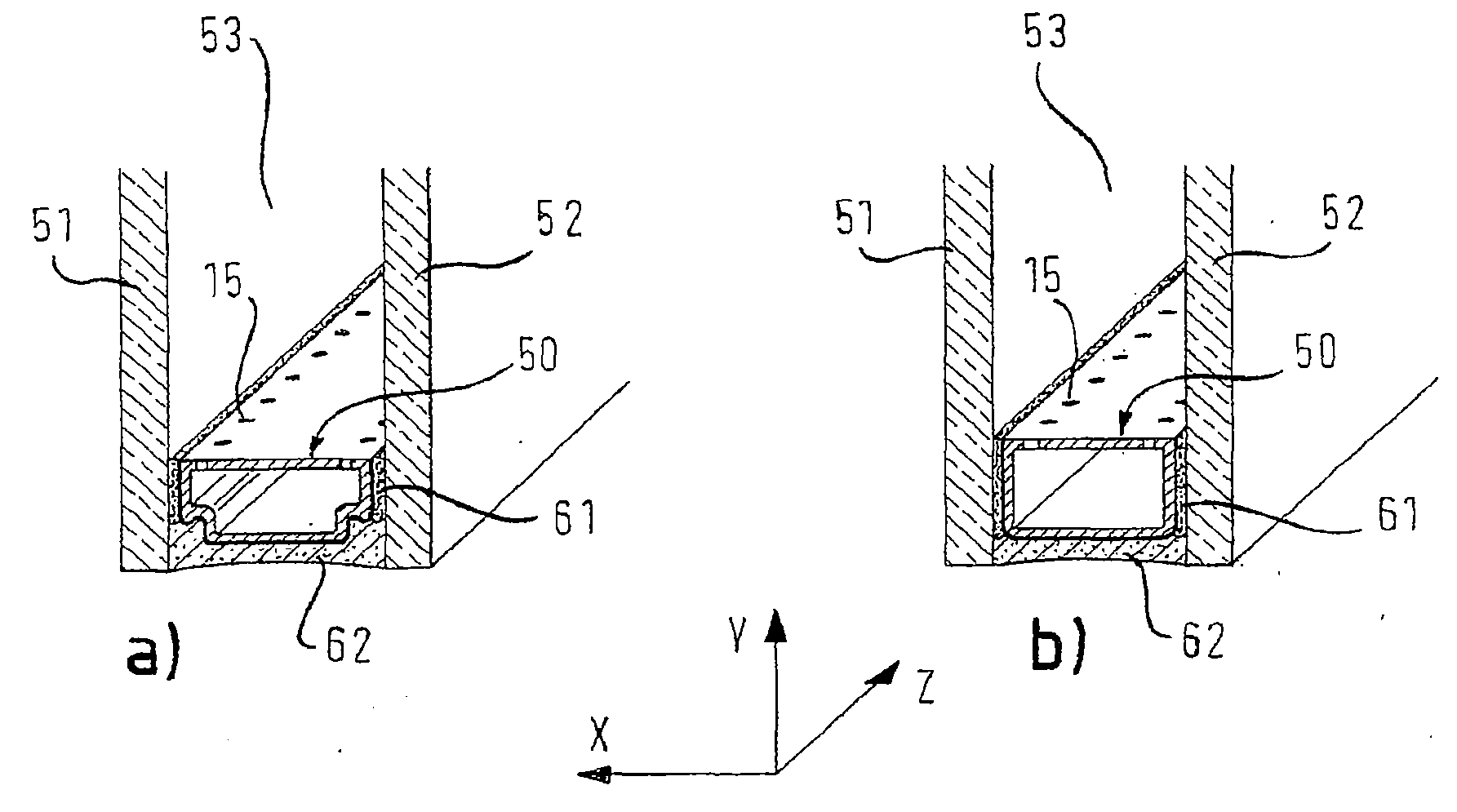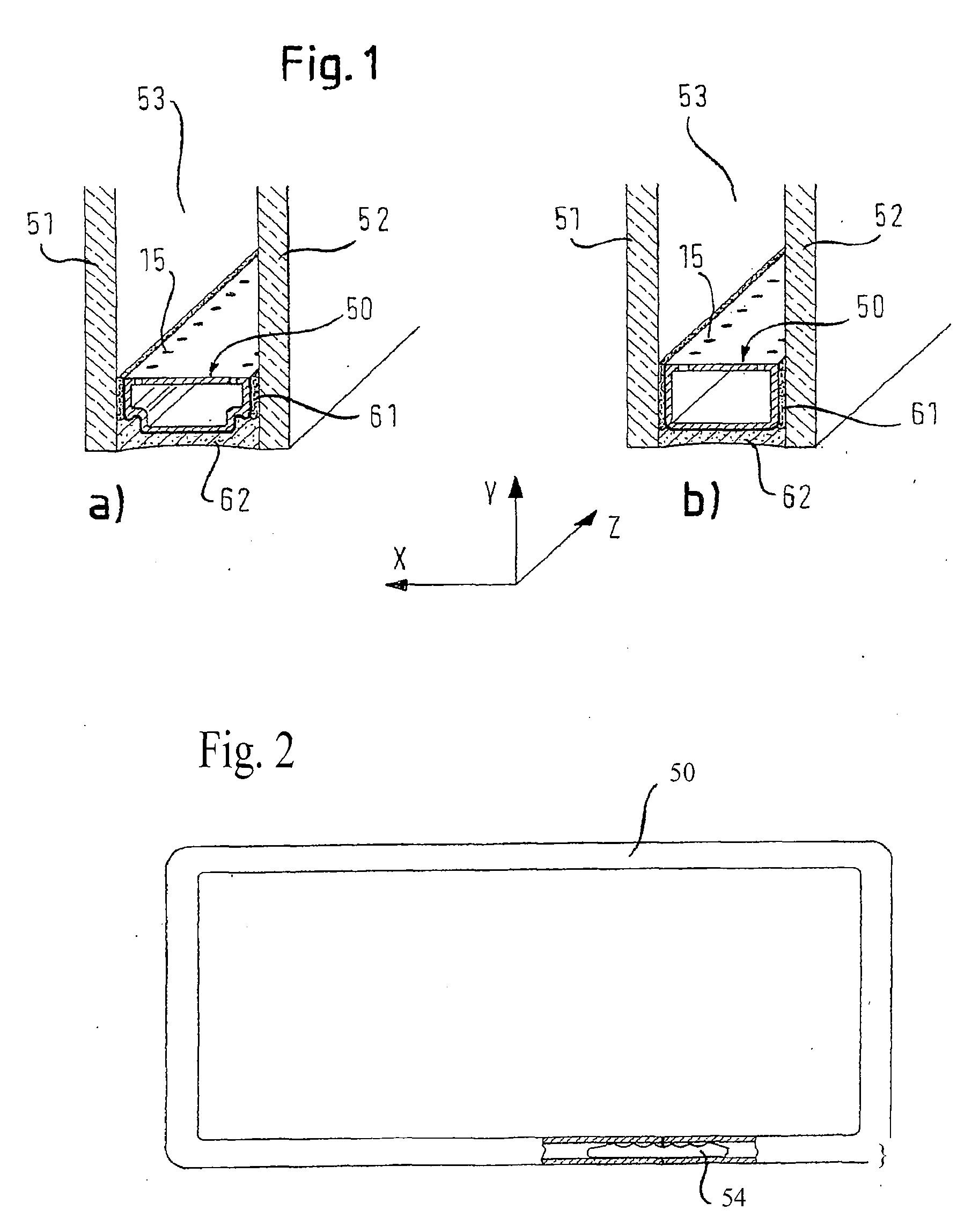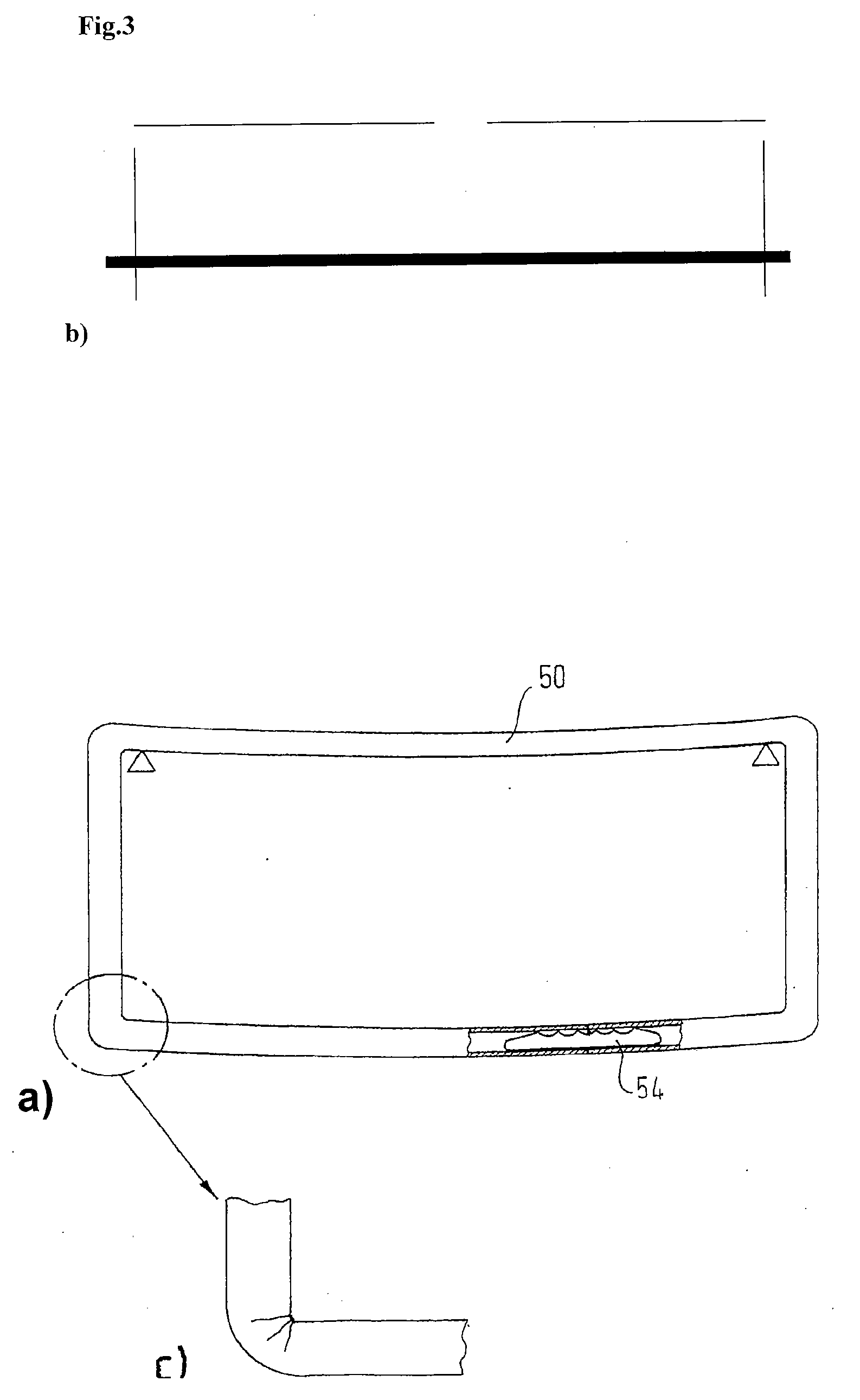Spacer profile for a spacer frame for an insulating window unit and insulating window unit
a technology of spacer profiles and insulating windows, which is applied in the direction of doors/windows, building components, construction, etc., can solve the problems of reducing the chamber volume of desiccating material, reducing the effect of wrinkle formation, and reducing the problem of wrinkle formation
- Summary
- Abstract
- Description
- Claims
- Application Information
AI Technical Summary
Benefits of technology
Problems solved by technology
Method used
Image
Examples
first embodiment
[0038]In FIGS. 1, 4-9 and 11, a so-called W-configuration of the spacer profile is shown in each a) view and a so-called U-configuration is shown in each b) view. A spacer profile will now be described with reference to FIGS. 4a) and 4b).
[0039]In FIGS. 4a) and 4b), the spacer profile is shown in cross-section perpendicular to a longitudinal direction, i.e. along a slice in the X-Y plane, and extends with this constant cross-section in the longitudinal direction. The spacer profile comprises a height h1 in the height direction Y and is comprised of a profile body 10, which is formed from a first material. The first material is preferably an elastic-plastic deformable, poor heat conducting (insulating) material.
[0040]Herein, the term “elastic-plastic deformable” preferably means that elastic restoring forces are active in the material after a bending process, as is typically the case for synthetic materials for which only a part of the bending takes place with a plastic, irreversible...
second embodiment
[0059]In FIGS. 5a) and 5b), a spacer profile is shown in cross-section in the X-Y plane.
[0060]The second embodiment differs from the first embodiment in that the elongation portions 31, 32 are almost double the length of the first embodiment, whereby the elongation length 11 stays the same. This is achieved by including a second bend (180°) in the profiles 31b, 32b and by extending the portion of the elongation portion, which is continuous with the second end, likewise in the traverse direction X, but now to the outside. A substantially longer length of the elongation portion is thereby ensured, whereby the closest possible proximity to the inner side of the spacer profile is maintained.
[0061]In addition, a part of the material of the profile body is enclosed on three sides by the profiles 31b, 32b. These enclosures result in that, during a bending process that includes compression, the enclosed material acts as an essentially incompressible volume element.
third embodiment
[0062]Referring to FIGS. 6a) and 6b), a spacer profile will be described, wherein the areas surrounded by a circle respectively in views a) and b) are shown enlarged in FIGS. 6c) and d). According to the embodiment shown in FIG. 6, the diffusion barrier film 30, inclusive of the elongation portions 31, 32, extends completely along the outside of the profile body 10. The elongation portions 31, 32 and their profiles 31c, 32c are thus visible on the inner side (the “outside” facing the space between the window panes) in the assembled state, because the elongation portions 31, 32 are not covered at the inner side by the material of the profile body, but rather are exposed. According to this embodiment, the elongation portion is arranged as close as possible to the inner side.
[0063]The embodiment shown in FIG. 6 could be modified so that the elongation portion 31, 32 is elongated and, similar to the embodiment shown in FIG. 5 (or also in FIGS. 7-9), extends into the interior of the acc...
PUM
| Property | Measurement | Unit |
|---|---|---|
| thickness d1 | aaaaa | aaaaa |
| thickness d1 | aaaaa | aaaaa |
| thickness | aaaaa | aaaaa |
Abstract
Description
Claims
Application Information
 Login to View More
Login to View More - R&D
- Intellectual Property
- Life Sciences
- Materials
- Tech Scout
- Unparalleled Data Quality
- Higher Quality Content
- 60% Fewer Hallucinations
Browse by: Latest US Patents, China's latest patents, Technical Efficacy Thesaurus, Application Domain, Technology Topic, Popular Technical Reports.
© 2025 PatSnap. All rights reserved.Legal|Privacy policy|Modern Slavery Act Transparency Statement|Sitemap|About US| Contact US: help@patsnap.com



